When presented with the idea of a roadtrip adventure across Namibia, one might think Namiba-what?
Well, let me tell you, Namibia and it’s insanely varied and unique African terrain harbors some of the most awe-inspiring sights I’ve ever seen. From a red moon so full and low to the earth it was almost incomprehensible, to Fish River Canyon and its cratered ravine to the skeleton coast and it’s eerie barrenness, Namibia transports you as far away from the every day as you could travel. Himba tribal women covered in red soil, Sossusvlei’s “Big Daddy” dune reaching high into the clear blue sky … Namibia amazed me at every turn.
My aunt’s travel agent basically fired Gabri by exasperatedly and accidentally exclaiming “I can’t do this anymore” on his answering machine after fielding his eight million questions. So, we decided to go it alone. We planned our entire adventure, independently booking everything. Along the way, we coerced some near and dear Italian friends to opt in to our Namibian experiment. It wasn’t a hard sell. “Hey guys, we’ll plan every minute of every day of this epic adventure and you just buy your tickets.” Friendship with the “Brahatkins” has its benefits. I was outnumbered; the American among a car full of Italians. At the time, I wasn’t fluent. And so, for me, there was lots of zoning out into the lunar landscapes that surrounded which was actually meditative and marvelous.
During the entire duration of our adventure, we passed one single car going the opposite direction and when it inadvertently kicked sand up into our open windows, its inhabitants were on the receiving end of hand gestures and arms flailing that meant, you guessed it, “vaffanculo.” This was just in case the speed at which we were recklessly going wasn’t enough to indicate Italians were at the wheel.
In terms of speed, the way the itinerary worked was that drive times really should have only allowed for one activity at each new destination. And yet, the inbuilt Italian need to always arrive first paired with Gabri’s TOMO (terror of missing out), compounded by the complete lack of road rules led to a scenario where we were multiples of miles over the sane, if not suggested, speed limit. Hence my coining of the term Ferrari Safari. (Our vehicle was not, in fact, a Ferrari and I wouldn’t suggest it. Although, I did see they introduced a four wheel drive system in recent years so should you be in a position to import a Ferrari to Namibia, by all means, have at it!)
Our incredible trip to Namibia involved a number of life-risking scenarios. To name a few:
Life-risking scenario no. 1: When embarking on a self-drive tour of Namibia, any outfitter should provide you with a satellite phone. This is your savior should an accident happen out in the middle of nowhere where you will spend 99% of your time. About three days into our adventure, we realized we had no such phone. They forgot to provide and we forgot to ask. Were anything to happen, we unquestionably would have died of thirst had we not on random animal impact. I thank the Namibian stars for watching over us.
Life-risking scenario no. 2: On the first day of our trip, we spotted a lone zebra grazing out in the bush. I dislike zoos on principle, this was my first time in Africa and I had no idea how many zebras we’d encounter in the coming days. So, this was a super rare and exciting find. We pulled over and took off running to befriend this loner zebra. He was pretty disinterested but we were enamored. Later that day, we read about the many common venomous snakes of Namibia such as the Black Mamba and the Black Cobra which were likely slithering around just waiting to sink their teeth into some pasty American and olive-complected Italian skin. I thank the lethally venomous snake varieties for slithering the other way.
Apart from our zebra friend for whom we risked our lives, our intro to Namibian wildlife included sightings of springbok, kudu, ostrich, bison, more zebra and some animal with the same horns as Maleficent. These varied creatures all came to greet us as we ventured out on our first sundowner drive in the Kalahari Desert.
If you know me, you know I’m plagued by a rather delicate stomach. So you might imagine my dismay when I was offered and ingested what I thought was an unassuming pecan only to discover it was actually a warm mussel, just baking in the desert sun, ready to attack me from the inside. Alas, I somehow escaped a terrible fate. And there you have life-risking scenario no. 3. I thank you warm Namibian mussel for going easy on me.
Already on our first night, we found ourselves enamored with the truly incredible Namibian night sky. While bedtime sneaks in fast upon you, it's worth a bit of stargazing. If you leave your windows open to wake up with the sun, you’ll find a color combination native and unique to Africa; orange, yellow and red in a glorious mosaic.
I spent my first morning in Africa admiring a sky alive with colors I’d never seen before. This filled me with enough inspiration to last the long drive to Fish River Canyon. Just before arriving at the canyon, we found a little Burning Man-esque installation of rusty old cars and igloo-like rooms for rent from a local Afrikaans couple that owned thousands of surrounding acres and farmland. Testing fate once again, Gabri and Franci felt inspired to help themselves to a drink of raw egg from the farm’s chickens.
Stomachs somehow in tact, we continued down a dirt road to the strange aesthetic combination of German and Namibian architecture that defined Canyon Village and Lodge. With natural, gargantuan rocks, trees of winding bark, bottom-lit boulders, meandering antelope and cabins fit for hobbits, I felt I’d found myself on the inside of an African fairytale. The huge full moon floating above contributed to the surreal feeling. Having arrived in time (because Ferrari Safari) for the sundowner walk, we climbed one among the many massive boulders to enjoy a Windhoek beer with a view. The full moon rose as an incredible sun plunged into African oranges and yellows that splashed across the sky. I was at my most content.
Fish River Canyon is the biggest canyon in the continent of Africa, second in the world next to the Grand Canyon. Its plateaus, dips, nooks, crannies and moon-like surface combined with its grandeur sort of satisfied my desire to visit Mars, at least for the couple hours we were there. There are certain images of Namibia that are forever etched into the archives of my mind and Fish River Canyon is certainly one of them. The other is Sossusvlei.
My arrival to Sossusvlei came complete with an enormous, full, crimson red moon. I thought I was looking at Mars. We were told it was a rare occurrence and it may very well have been the most supremely beautiful site I’ve ever seen. It was impossible to capture with our measly cameras which, to me, simply spoke to its majesty and specialness. It was as if it was too alien to abide by the science of photography. We tried to sleep outside under the stars that night but with wimpy Miami blood running through our veins, the chilliness sent us inside for warmth and away from the moon I’d fallen deeply in love with.
And that was just nighttime in Sossusvlei. The main event came with daylight when we ventured to famed Big Daddy dune. Big Daddy is the world’s tallest peak of sand and is over five million years old. It’s made of red sands from the Kalahari desert that were carried by the wind to their resting place 350m up into the Sossusvlei sky. From Big Daddy, you look out onto Deadvlei, one of the most photographed spots in Africa, certainly Namibia, with its 900 years dead trees and dry, cracked "pan," once a river, now rough earth.
The climb up Big Daddy wasn't a total breeze but the view from the top was worth every minute of the ascent. A sea of sandy, orange waves kissed the blue sky for yet another indescribable color combination, perhaps the most impactful. Big Daddy sits half in shadow and half in the light for an effect that seemed too precise to be real. We took hundreds of the obligatory jumping picture before finding our way down. It was no ordinary descent. The way down Big Daddy is to run, even summersault if you're willing to have a face full of sand. My hair's tendency to wind its way into dreadlocks dissuaded me from the latter but it looked like fun. The sand is soft and it makes a gassy noise with every step that brought out the immaturity in everyone. Sand boarding is prohibited since you can pick up a lot of speed down this mountain of sand that lands you abruptly onto the dead, cracked earth of Deadvlei, hard as rock.
Our bouncy descent included an unreal view of the eerily beautiful dead trees punctuating the blue sky for a magnificent contrast with the surrounding red dunes. We collected some Big Daddy sand which sits today in a tube on a shelf in our home. For what reason? I’m not sure but it felt like a necessary acquisition and brings me a little joy to know there’s a little Big Daddy with us. You can experience Sossusvlei by hot air balloon ride or scenic flight. For me though, the tactile experience of running down the dune was the best way to get to know this wondrous place.
Namibia’s diversity allows for the sort of magnificence and grandiose nature of sights like Fish River Canyon and Sossusvlei but sprinkles in some odd little stops like Aus and Luderitz. Near the former, you can find a small, century-old population of wild desert horses, the only remaining feral herd in Africa. We happened upon more than a dozen of these bony, seemingly hungry creatures right where and when we were told we would. I was a little dismayed by their appearance but I suppose not knowing where the next meal is coming from is the price they’re paying for a life of freedom. I’d later read that they’ve evolved to withstand more dehydration than the average horse.
Luderitz, on the other hand, is a bizarre oceanside town of heavy German influence, seemingly frozen in time. In front is a ghost town and just before that, a restricted area we came to find was DeBeers-owned diamond mining terrain. I tried to convince the others that we should go mining but they were not amused. And then I found myself trying to remember the plot of Blood Diamond. We made our way back to Aus when it already had grown dark and had it not been for the light of the moon, we'd have been in total darkness, risking a head on wild horse collision. And there you have life-risking scenario no. 4.
Swakopmund, the extreme sports capital of Namibia, faced us with life-risking scenarios 5 and 6. It’s another bizarre and I suppose somewhat charming town that felt more modern than those we visited leading up to it. It's the beach resort and adventure capital of Namibia and was covered with a sort of fog, what I imaged was a combo of the sea meeting the sand. It, like lots of Namibia, is a town built with German influence but in a strange juxtaposition, you can find Himba tribeswomen on the street peddling beaded bracelets.
Having skipped the scenic flight over Big Daddy, we opted into a 2.5 hour ride that covered Sossusvlei, Wallis Bay, the salt pans, shipwrecks, part of Skeleton Coast and Cape Fur seals and flamingos. It sounded lovely and like a great way to take in the surroundings. But it was very much life-risking scenario no. 5 (and perhaps the scariest of all). We were introduced to our fresh-faced, ginger pilot who we were told was 20 years old but I’m fairly certain was 14. We boarded his tiny plane where he proceeded to live out his Top Gun-inspired fantasies. We nervously laughed, and then screamed, as he nose-dived towards the Skeleton Coast only to jerk the plane back up from the ground and spin it around. I spent most of the time trying not to hurl but in the moments I could look out the windows, I caught some splendid views of Namibia’s highlights and untouched Earth from above. It’s experiences like these I’m glad I had before having kids as I was somehow able to find fun in fearing for my life.
Later, we headed out to go quadding on the dunes. Franci’s quad lost a wheel out on the dune which fortunately didn’t result in the disaster it could have (life-risking scenario no. 6). Still, it was definitely a worthwhile activity—both fun and beautiful. We opted out of sand boarding as some quads had driven on the dunes where we were supposed to go and this apparently made it dangerous for the next few days. Instead, we took a walk to the Brahaus Arcade where you can buy local crafts and if you're looking to spend, accessories made from Ostrich.
Our adventure was relatively free of threats to our lives by this point. Spitskoppe, known to some as the Matterhorn of Namibia due to its distinctive and familiar shape, offered terrain very reminiscent of Fish River with incredible reddish rocks. It was a lower key destination in that the main event was venturing out with a delightful guide to see some million year old rock paintings. On the stroll home after dinner, we found the Milky Way and its awe-inspiring comrades of the cosmos. There are few places on Earth where you can see that many stars that clearly and they just happen to be my favorite places of all.
Our Italian race car drivers took half the time they should have to get to Damarland, a mountainous region that’s home to an assortment of desert-adapted wildlife such as elephant, rhino, zebra and lion, somehow managing to survive in this near-barren landscape. Picturesque Brandberg is another of the area’s attractions in that its Namibia’s highest mountain. On the speedway to Damarland, we were flagged down by Himba women selling bracelets. In exchange for a purchase, they allowed us to take their picture. I read in a gringo guide book that if you’re looking to gift them something, it’s best to give them bread or some kind of starch as straight up money promotes a cash economy that moves them away from their communal culture and traditional way of life. Sugar was also not recommended as they will likely never see a dentist. This advice left me wondering what they’d write in their guidebooks about us: “Don’t give them cash because they’re mostly capitalist pigs who are up to no good.” Just kidding! But really, it’s a thought I often have when reading Western opinions on other cultures. What would the other side write?
After lunch at our gorgeous camp, we headed out with a guide to see the desert elephants. It took us no time at all to find about 15 of them. They were amazing. Rosie, the matriarch, and her daughter Anna and grandson Valentine (didn’t make those up) were unbothered by cars but apparently not fans of people roaming outside of cars. They’d come exhilaratingly close to our vehicle, playing pretty rough with one another. The landscape was the one that exists in your dreams of Africa - yellow grasses dotted with green trees and blue skies that melt into reds and oranges before the sun disappears into an unpolluted starlit sky.
The last remaining destinations on our adventure were all about wildlife. Etosha National Park is enormous and requires its own plan. We sort of fumbled here as we booked ourselves an hour and a half away from the park’s entrance when we thought we were right next to it. But, immediately upon entering this private reserve, we found seven giraffes just hanging out, ready to welcome us. I tried to stick my neck out to give one a hug but was urged to sit down. Have you ever seen an angry giraffe? If not, I seriously recommend you google it. It’s striking how quickly they’re able to weaponize their otherwise elegant necks.
While at the reserve, we only saw the aforementioned giraffes and the usual smattering of springbok. Others reported lions and rhinos but those others were part owners of the reserve. In any case, we decided to skip our second night there and booked ourselves at the opposite end of the park, right outside the gate. I’d recommend doing the same so you don’t need to backtrack as the park is overwhelmingly expansive.
You visit Etosha by car which makes for a long day. Unless you want to become lion food or an elephant stomping pad, there’s no getting out of the car. Okokuejo is the first watering hole requiring a visit and is the most famous of all. It didn’t disappoint. Herds of species alternated, taking turns to drink. First came the springbok and oryx, then the zebra and black faced impala endemic to Namibia. Then at our next stop, we met an enormous-even-for-an-elephant elephant that was posed in a way that said "I know I'm fabulous, thank you." After, we found a bunch of goofy giraffes arriving in constant rotation and upon closer inspection, I uncovered an uncanny resemblance between the species and Gabri, from legs to flaring nostrils. Make no mistake, this makes me love him infinitely more.
As we made our way across the rest of the park, we were a little disappointed with the lack of lions, leopards and rhinos. But we found countless zebras, a handful of elephants and giraffes and witnessed a kill of the avian variety which was surprisingly vicious. An eagle attacked and made a gory meal of a sweet little polka-dotted turkey-like creature. The boys were thrilled being the carnivorous cave men they are while we gals, albeit fascinated, wanted to save the little creature from its gruesome end. It was first pinned to the ground, then its feathers were plucked out one by one before its flesh was ripped from the bone. I guess you can’t interrupt the course of nature. You can, however, become a vegetarian.
I can’t quite recall if it was the first or second day we spent in the park but at one point, the combination of the heat and the time in the car led to a scenario where Gabri basically crucified himself. He passed out on a bench that had actual nails sticking out of it and began snoring so loudly that a crowd gathered. I guess no one told them that a rare species of Italian giraffe able to sleep in extreme circumstances could be found, on occasion, at Etosha. So, they gathered. And I sat entertained, not acknowledging any sort of relation to this strange and noisy beast.
The pressure was on for Erindi, a huge reserve of red sand and scattered mountains, where we’d desperately hoped to find the few animals that had eluded us up until that point. We had our own private deck positioned alongside an oversized watering hole and low and behold, it was there we spotted a family of hippos sitting next to some crocodiles. I definitely hadn’t imagined they could live in harmony but they, in fact, were. And finally, out on a last ditch effort on our final sundowner drive, we found some rhinos and a magnificent lion. And I whispered to the lion and the wind, “I love you Mufasa, and you Namibia.”
I wrote most of this account while in Namibia, nearly seven years ago. Now, almost a decade later, it remains one of the most amazing adventures I’ve ever been on. It was a feast for the eyes. Food for my soul. Unlike anything, anywhere else. I wouldn’t change a thing about the many life-risking scenarios I found myself in. Especially because now life has changed and I have three little humans who I adore and to whom I have great responsibility. I’m not sure I’d board that tiny plane with its 14 year old pilot. I’d definitely panic over the absence of the satellite phone. But I’d take my kiddos in a heartbeat on this spectacular adventure, just with a bit more caution and probably with my American, law-abiding self behind the wheel.
Namibia guide coming soon so for any interested parties, just let me know in the comments or via email and I’ll send you a link in the coming days!





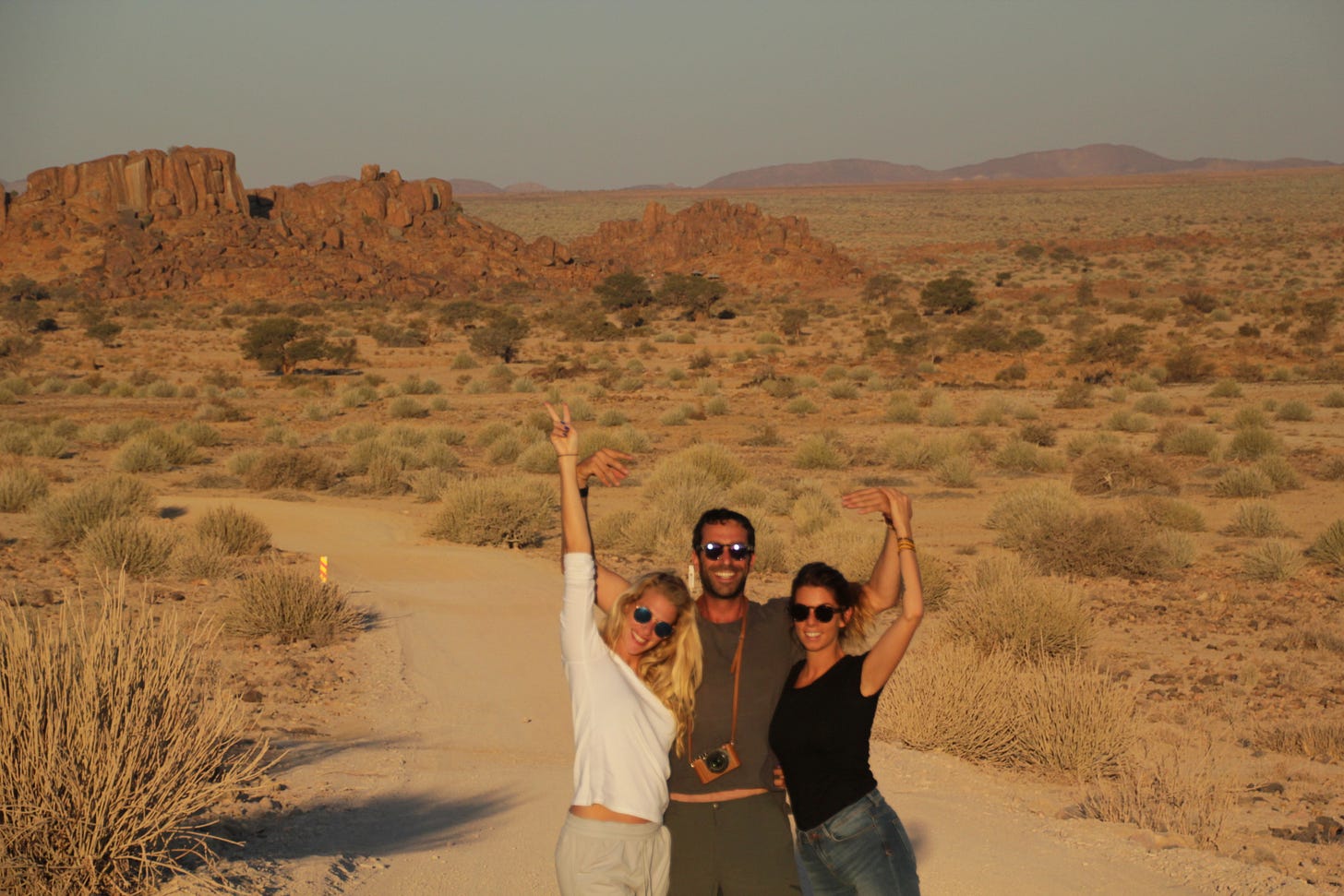
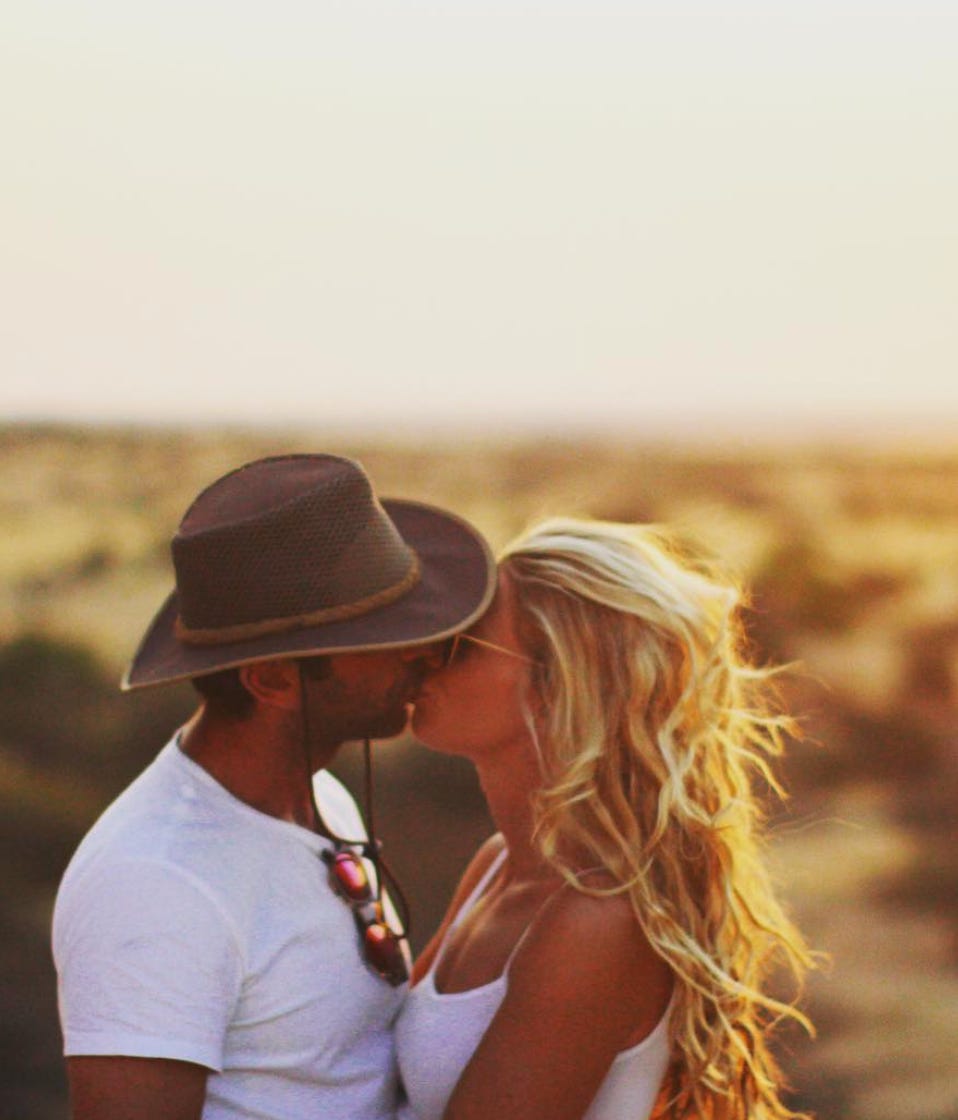





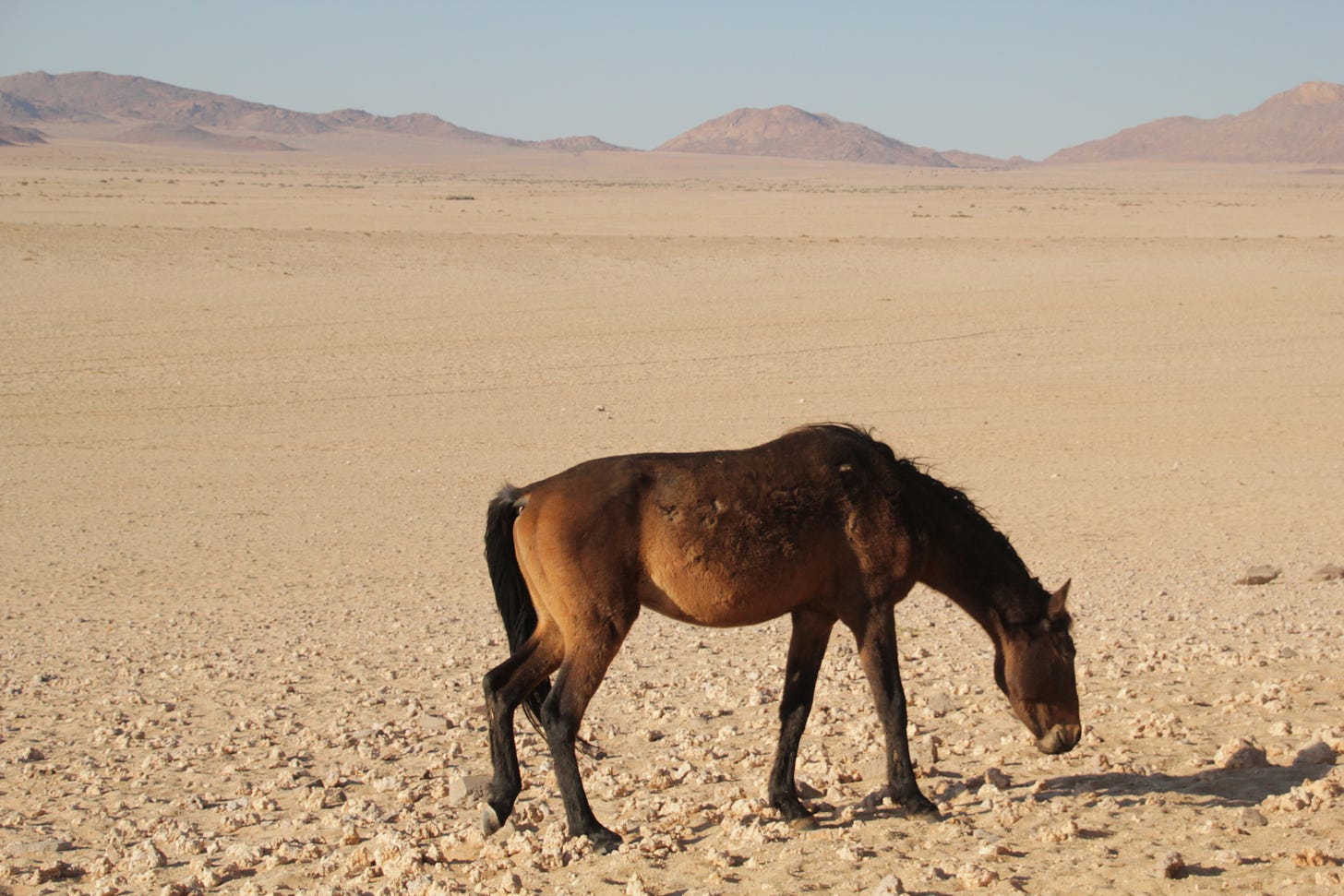

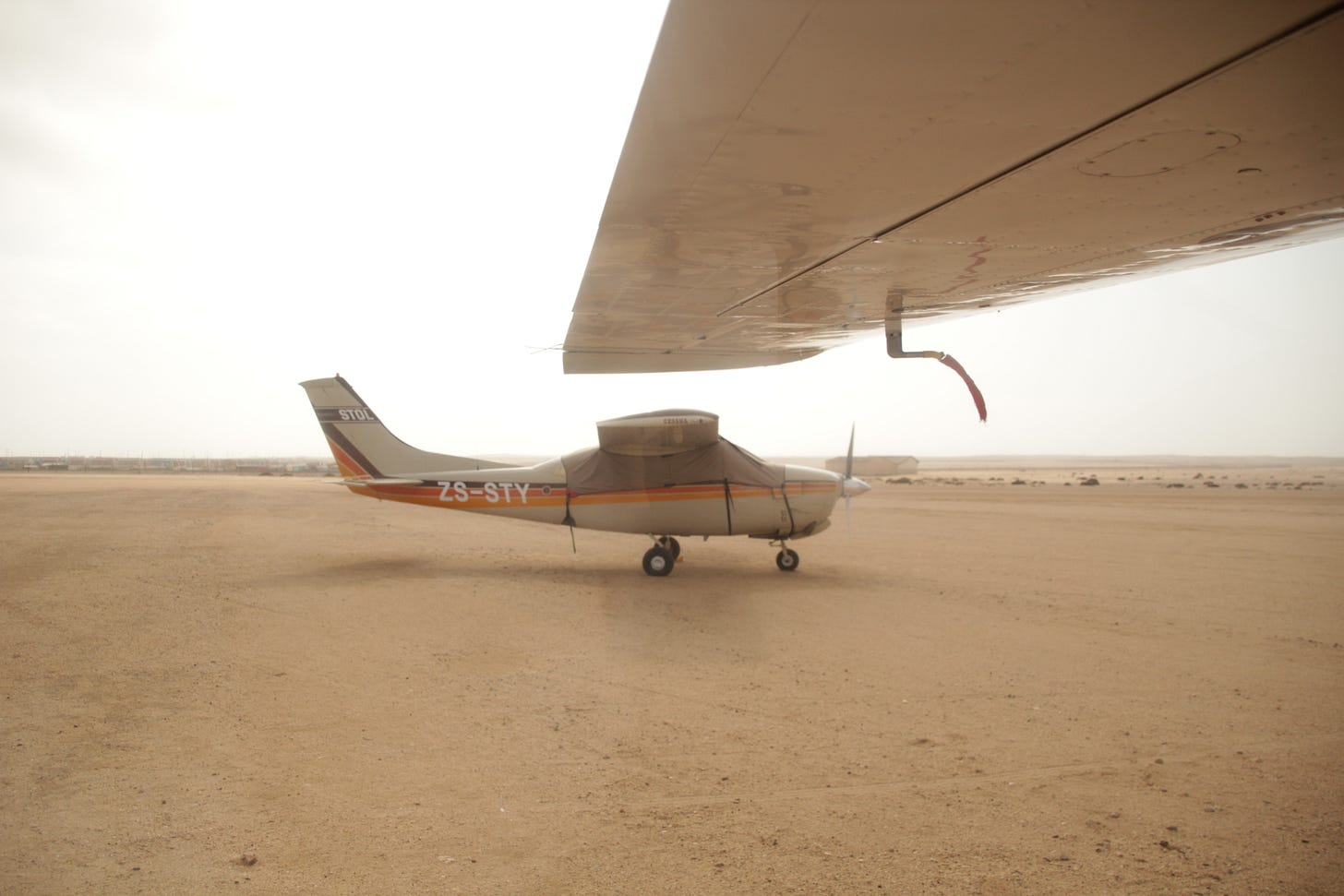
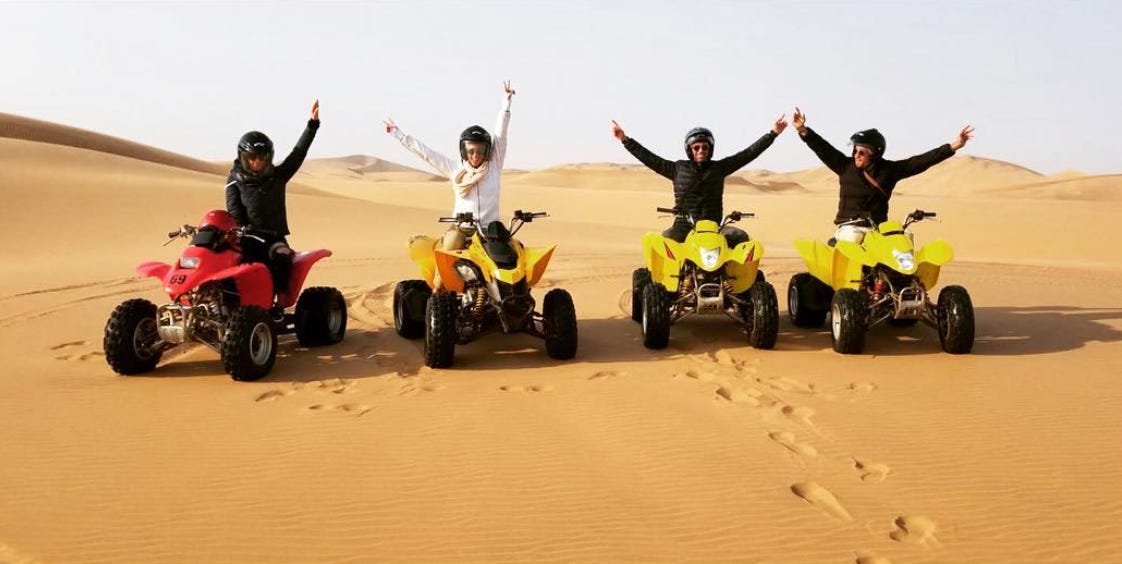

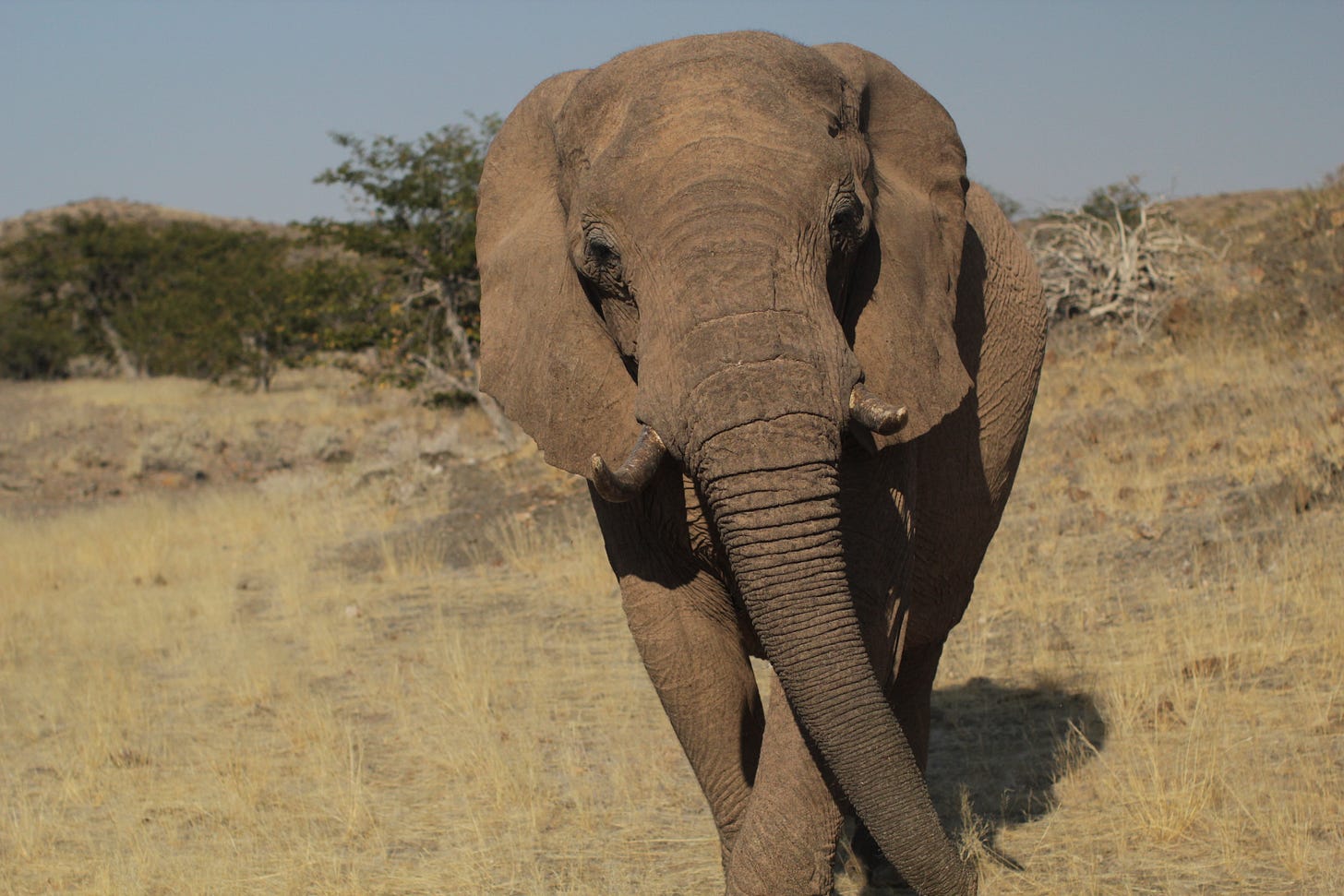
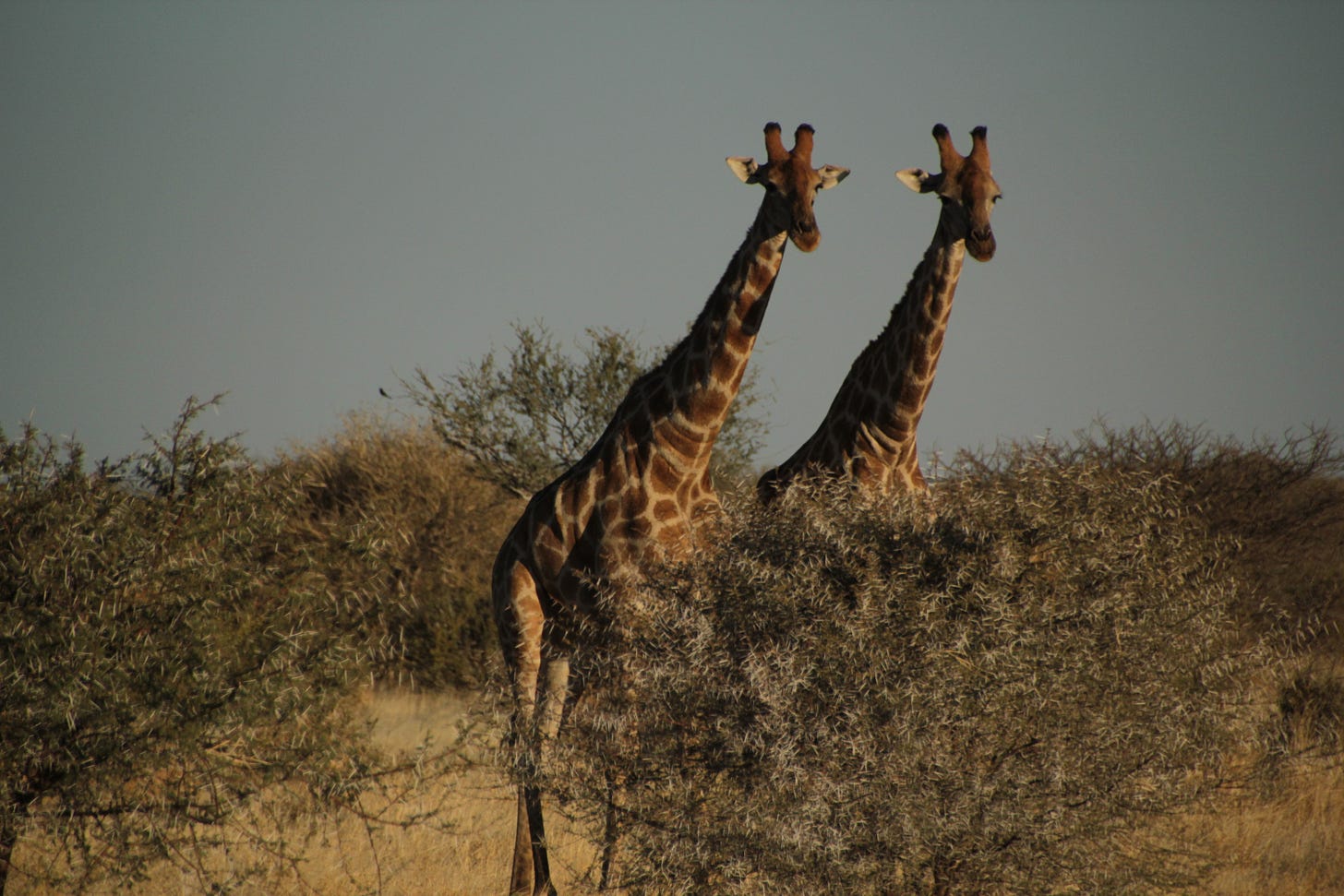
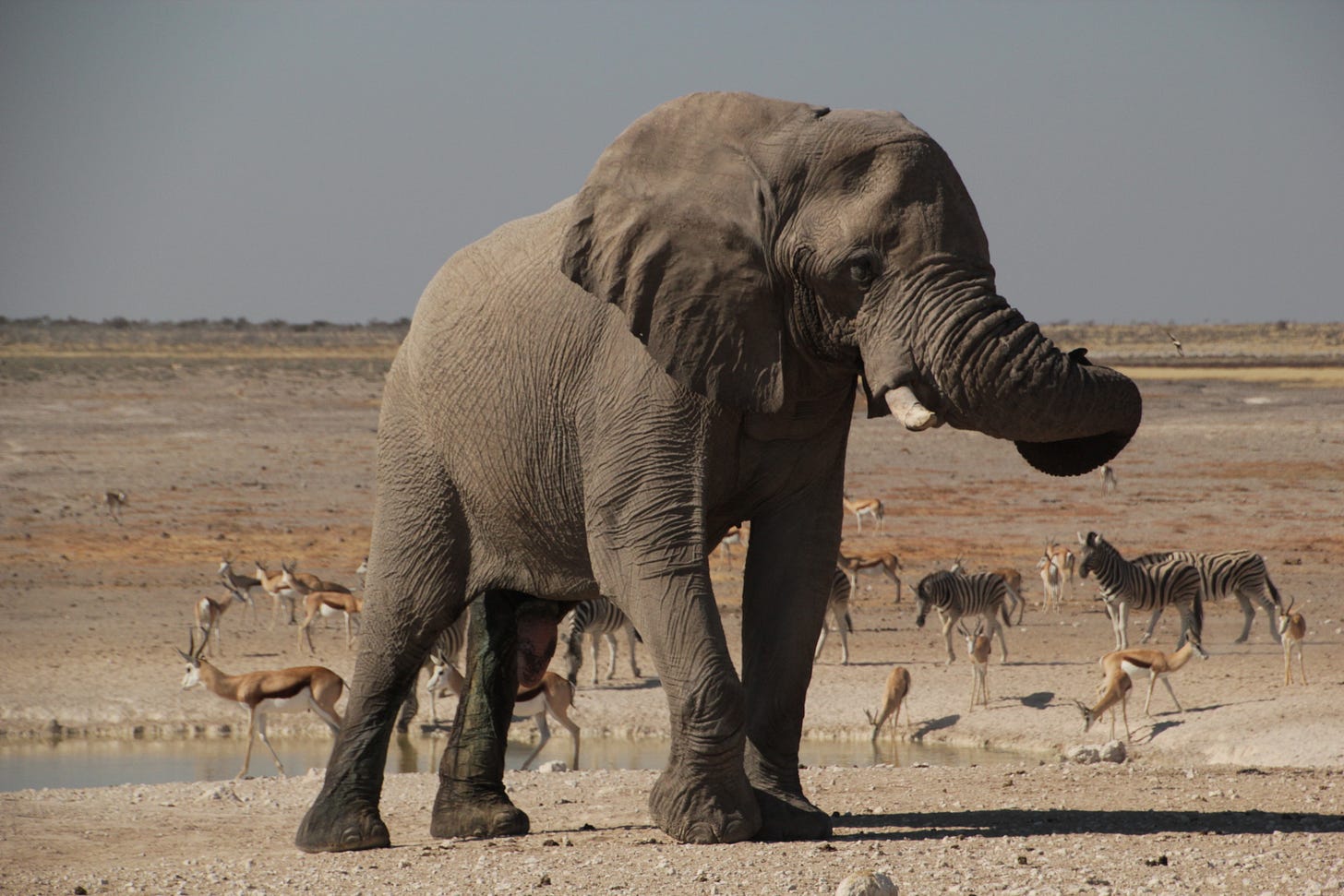
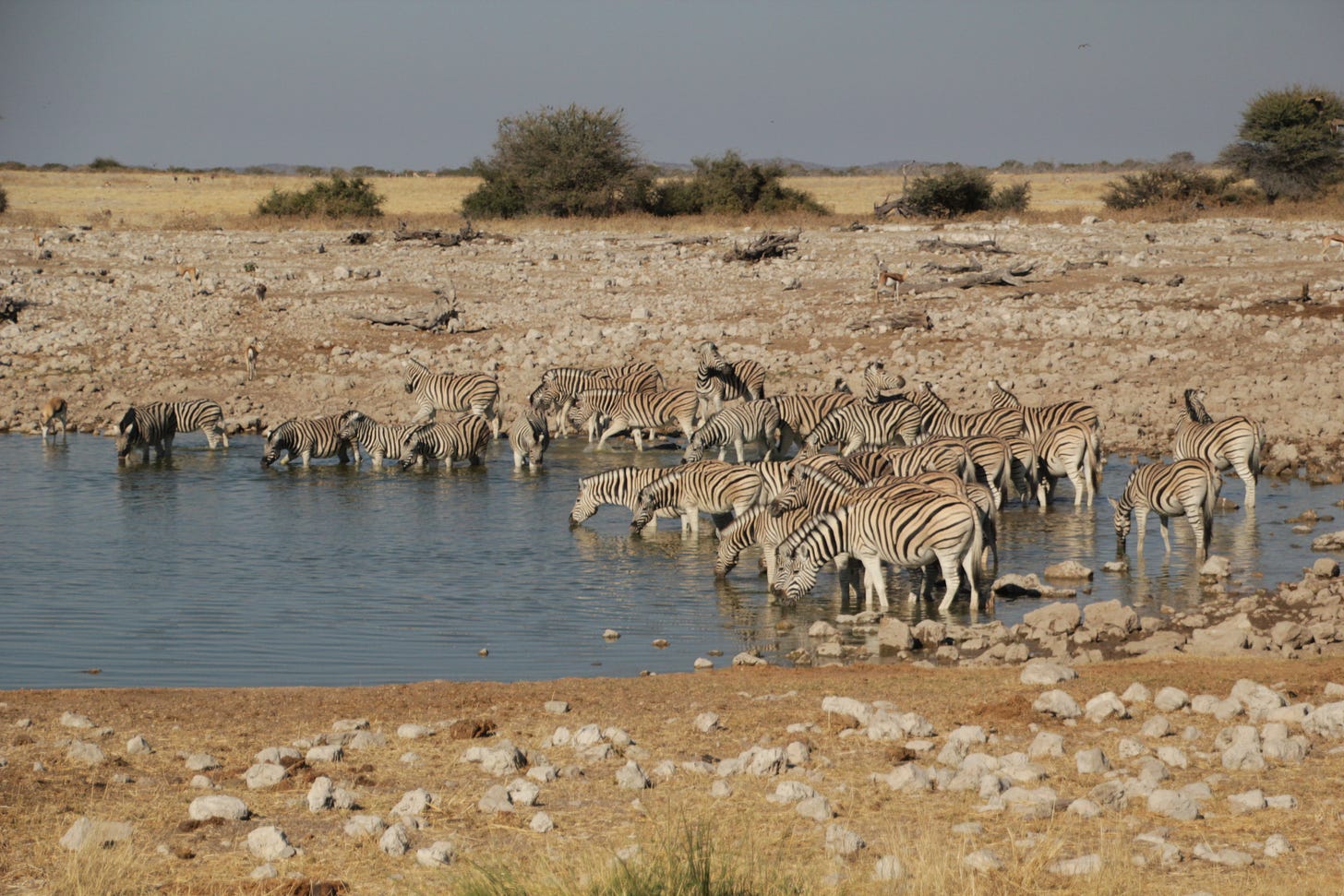

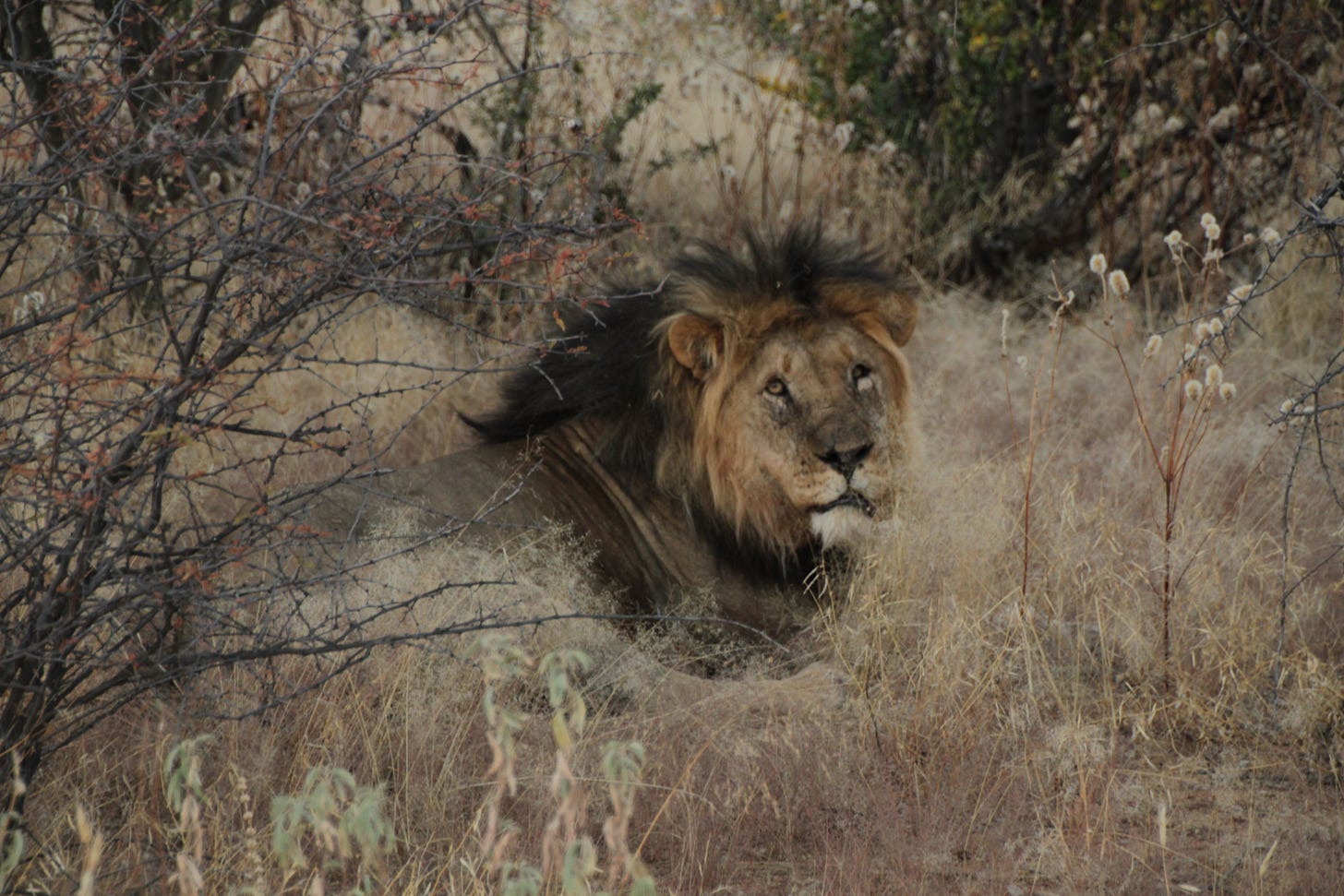
Waking up on a Sunday to this treat ☕️